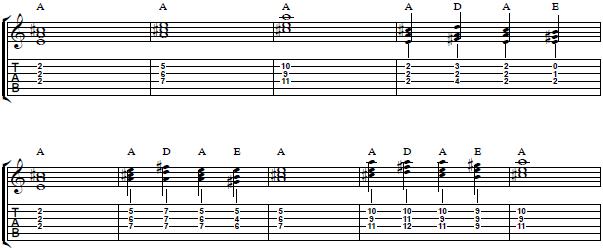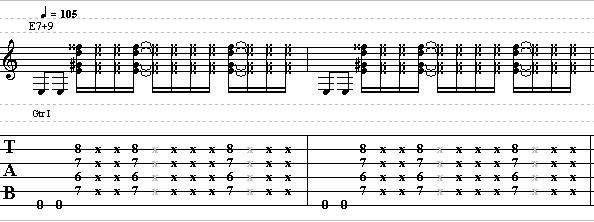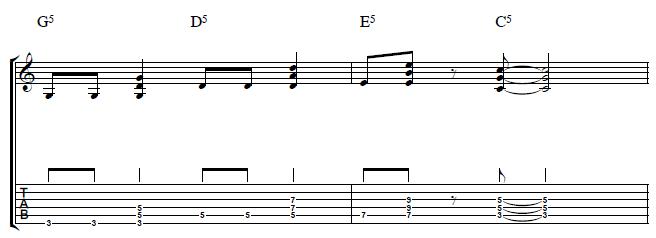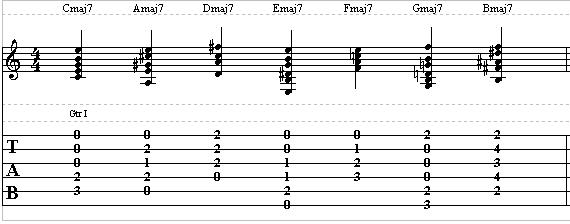How’s it going, guys. My name is John McClennan
and I’m here with guitarcontrol.com, showing you
some cool secrets here for your guitar playing.
What we’re going to talk about today is just expanding
your triad voicings and learning how to move from one
chord to another really smoothly. A lot of these chords
are going to be great for so many different styles.
Remember, a triad, it’s really diverse. It could
be in a jazz tune, it could be in a heavy metal tune,
could be classical music, it doesn’t matter.
Here we go. Let’s jump right in.
What we’re going to do is we’re going to take an
A chord and you may know your A here like this,
all on the 2nd fret. And then what I’m going to
show you is how to invert that. What an inversion
is we’re just going up to sort of the next
possible chord, moving the notes around.
Here we go. We’ve got 2, 2, 2 and then we’re going
to go up to 7, 6, 5, which would be another A chord.
And then the next voicing would be 11, 9, 10. And then,
of course, if I go again, I’m at where I started just
an octave higher. So all these chords here, just great
ways of playing an A chord.
Now, one of the exercises that I want you to do,
and this is in the tab, laid-out pretty clearly,
is you’re going to take the key of A and you’re
going to go from the I chord to the IV chord back
to the I, to the V, to the I. So just a little
cadence here, almost like classical music.
That’s A. And then I’m using this shape that I
used up here for the D. And then I go back to A
and then E. It’s like your big E chord here that
you probably already know. But I’m just playing
three notes of it so I’m getting a different sound.
And then back to A.
Now, the tab explains this in two more voicings.
But here we’re going to go A, and then I’m going
to go to D here like this, which is part of this D chord.
So you’ve got… And then last…
All right. Well, I hope this helps, and be sure to
click the link below. We’ll see you next time.







